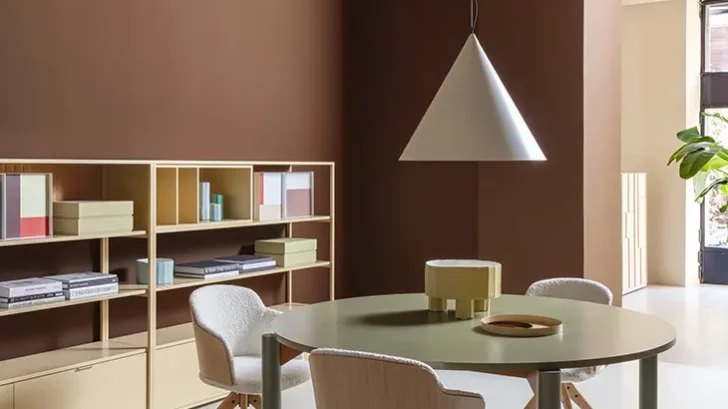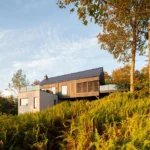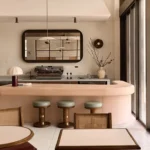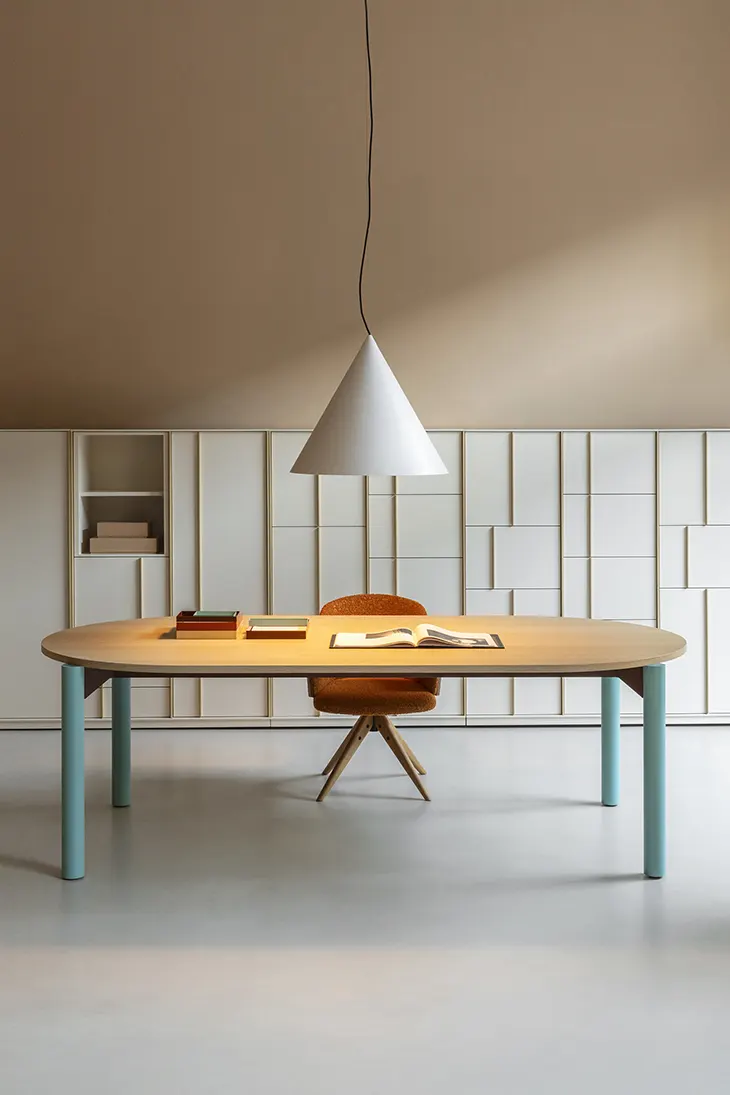
Dieffebi introduces OBA, a system of furniture designed to respond to the shifting demands of today’s work, hospitality, and shared environments. Designed by Altherr Désile Park under the artistic direction of Elisa Ossino, the collection brings together a curated palette of colors and forms that balance function with expression. In an age where interiors need to move fluidly between professional and social settings, OBA offers a coherent response, uniting visual clarity with practical versatility.
FURNITURE
OBA distinguishes itself through its carefully developed color language. Rather than relying on bold contrasts or seasonal tones, the palette focuses on desaturated hues and natural shades, combined in ways that produce a low visual impact. This subtle approach ensures the pieces can integrate into a wide range of contexts without overwhelming their surroundings. At the same time, the quiet strength of the colors allows them to endure beyond shifting aesthetic trends, offering longevity both in style and in use.
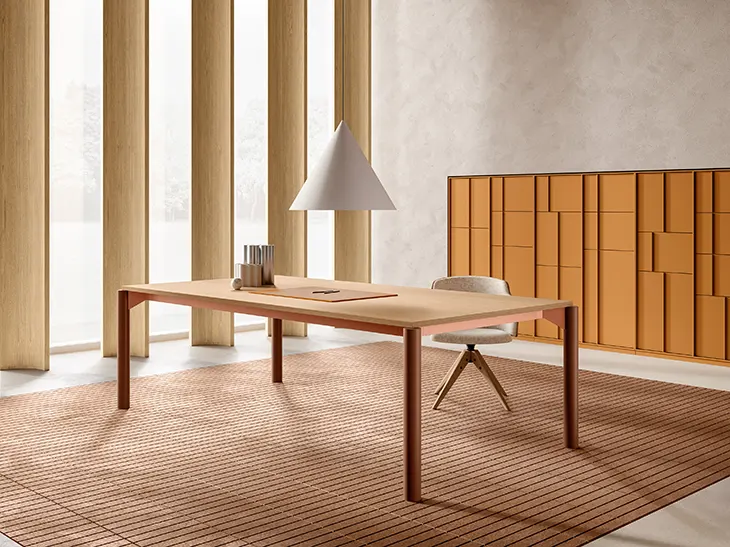
Central to the identity of OBA is its foundation in pure geometry. The collection embraces circles, triangles, squares, rectangles, and ovals as architectural modules, transforming these essential shapes into a vocabulary of design. Through this geometric grammar, Dieffebi and Ossino created a family of more than 20 tables, each varying in size, height, and purpose. The result is a system where individual elements can stand alone or combine seamlessly into larger configurations, depending on the spatial needs of the environment.
This modularity makes OBA particularly suited to the new demands of contemporary interiors. In offices, the tables can shift from operational areas to informal meeting points. In hospitality, they function as both practical surfaces and sculptural presences in lobbies, lounges, and dining areas. The consistency of form ensures coherence across these different applications, while the variety of proportions allows for precise adaptation.
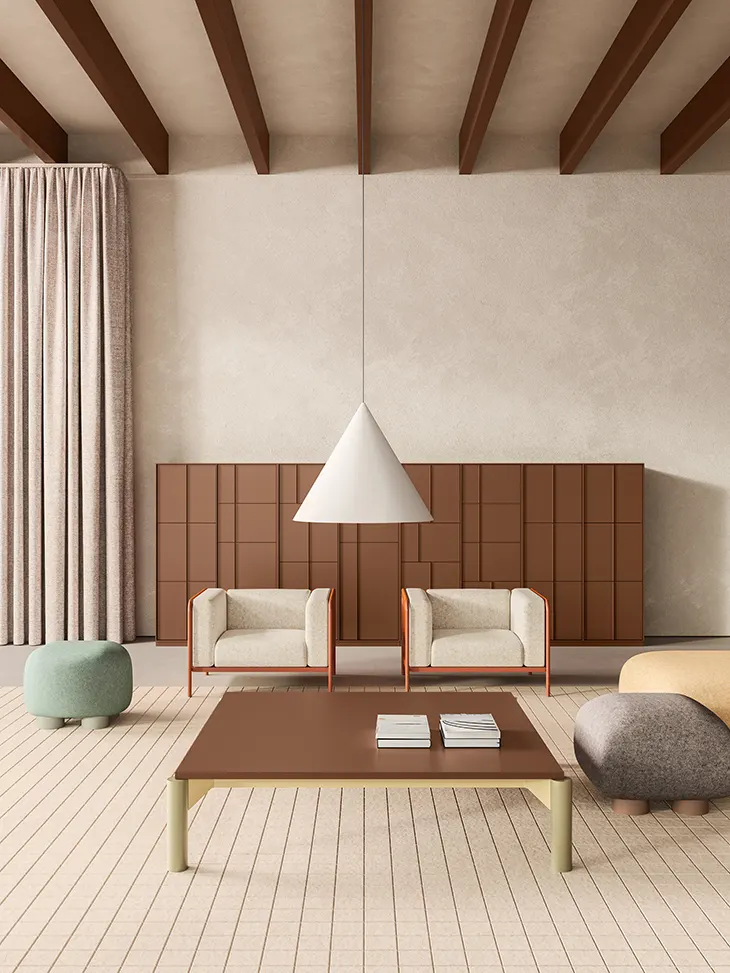
An important technical and aesthetic feature of OBA is the sophisticated structural node that connects the tabletop to the leg. This detail does more than provide stability: it defines the visual character of the collection. The node introduces a sense of lightness, ensuring that even the larger tables maintain an elegant and balanced profile. It also gives the tables a graphic quality, emphasizing their geometric purity and reinforcing the project’s design language. By focusing on this connection, Dieffebi achieves both functional reliability and a distinct signature element.
Sustainability sits at the core of OBA’s conception. The collection makes extensive use of powder-coated aluminum, a material selected for its durability, resistance, and full recyclability. Lightweight yet strong, aluminum allows the tables to perform effectively in high-traffic environments while ensuring their environmental footprint remains minimal. The powder coating adds to the longevity, offering protection and expanding the range of available finishes. This choice reflects Dieffebi’s broader commitment to creating design solutions that combine aesthetic quality with ecological responsibility.
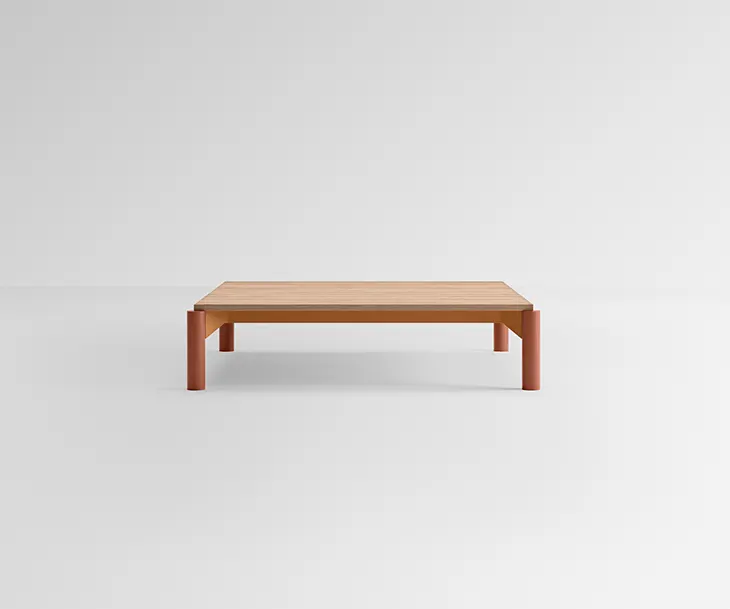
In addition to material selection, OBA’s design ensures that the tables can be easily maintained and repurposed across time. The restrained palette and essential forms mean they will not become obsolete as tastes evolve, while the modular nature allows them to be reconfigured as needs change. This approach extends the life cycle of the collection, reinforcing its sustainable orientation.
The strength of OBA lies in its ability to adapt across contexts without losing its design coherence. In contract projects, the tables provide flexible solutions that can respond to changing modes of work, from collaborative group settings to quiet individual tasks. In hospitality, they offer surfaces that support both functional requirements and aesthetic expectations, contributing to welcoming atmospheres. In lounges and shared spaces, the variety of shapes and dimensions encourages creative arrangements, allowing designers to build environments that feel both structured and dynamic.
